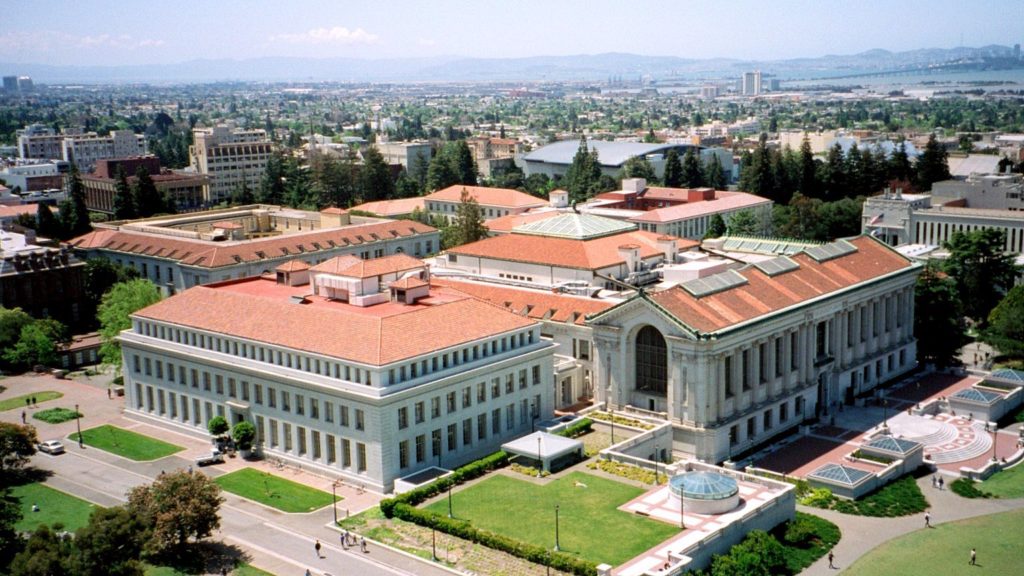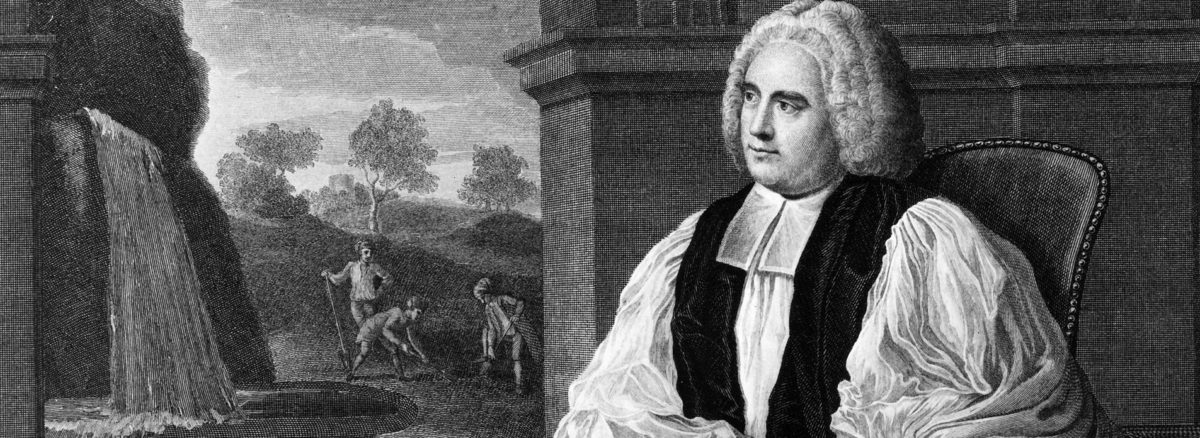GEORGE BERKELEY was born in Thomastown Co. Kilkenny in 1685. He remains relevant to this day. Melvyn Bragg discusses Berkeley on his BBC Radio 4 program ‘In Our Time‘
His father was English born, a recorder for Belfast. George Berkeley was educated at the Protestant college in Kilkenny. In 1700 he went to Trinity College Dublin where he was retained as professor, lecturing n Philosophy, Greek, Hebrew, Divinity and Medicine. He was, by any standard, a genius and was casually known as the “Absentminded Professor”, often walking around in a dream, colliding with people and furniture. He was the first person to believe in two levels of reality – reality in the mind and reality in fact. In 1708 he met Sir John Perceval who introduced him to high society in England. From this time there are numerous references to Berkeley in the Egmont Papers. He always regarded himself as English and considered the native Irish foreigners.
Berkeley left Trinity College Dublin in 1713 and went to England for further learning and was ordained in the Church of England. He served as chaplain to Lord Peterborough while Peterborough was ambassador to Spain. He travelled widely in Europe, taking in Rome, Turin and Milan, where he was enthralled with Italian art. He remained in Europe for four years and returned to London in 1720. His friend Egmont secured the position of Dean of Derry for him but his real ambition was to have a diocese in England.
From 1700 onwards, many Irish priests and lay people were sold as slaves in the Caribbean. There, they began converting the local people to Catholicism. Berkeley felt strongly about this and sailed for New York in 1728. He bought a farm in Rhode Island and subsequently attempted to found a Protestant college in Bermuda. Although he had a grant of £20,000 his attempt failed. With this money, he left a large collection of books and money to Yale and Harvard universities. Berkeley University in California was named for him.

He sailed from Boston in 1732 with an expectation of high office in England. However, his expectations were not well-founded and only through the good office of his friend Egmont was he appointed Bishop of Cloyne in 1734. He remained Bishop of Cloyne for 18 years. His first act was to employ an Italian violinist to teach his children and entertain the planters of East Cork.
The only book he wrote while he was at Cloyne was “The Querist”. Arthur Griffith, co-founder of the Irish Sinn Fein movement, carried a copy of it around with him and called it his “breviary”. It was an Economics text book for two centuries. The book illustrated his great interest in land reform and agricultural development in England.
Arthur Young, a leading English agriculturist of the late 18th century, visited leading Anglo-Irish landowners in the 1770s to evaluate and improve current Irish agricultural practices. He and various other visiting experts recommended deep ploughing and crop rotation. Berkeley surrounded his house with exotic trees and flowers and his wife became a leading farmer.
At this time, Berkeley forgot about philosophy and engaged himself in agriculture locally. He had 100 men working on his farm. Another interest he had since he was at Trinity was “cures”. When he was in the USA he got a cure from an Indian tribe which he believed to be a cure for all ills. It was called Taroil, the sap of the pine tree. He recommended it for humans and for animals. On one occasion, he drank a gallon of it in a few hours. He said it should be sold in all shops and be fed to every child. Shortly after this, two of his children died and were buried in Cloyne. His own health failed as well.
Two of his letters addressed to the Catholic clergy of Cloyne in 1749 illustrate certain aspects of his character. His attitude towards the Roman Catholic clergy was kind but blinkered. He saw the poverty and illiteracy but failed to recognise the deprivation that caused it (the penal laws had been in force for 50 years). His letter to the Roman Catholic hierarchy encouraged them to be diligent, to advise the people to develop the land and to use advanced methods in animal and plant husbandry. He also encouraged the development of industry and roads. He wrote in this manner in the full knowledge that his Catholic counterpart Bishop John O’Brien was hiding in a small cabin near Rathcormac and that Tadgh McCarthy the Roman Catholic Bishop of Cork was in similar circumstances.
In 1747, when the Methodist founder Rev John Wesley came to East Cork, he was stoutly opposed by Berkeley. In 1752, Berkeley sold his estate in Cloyne to Longfield of Mallow. He then went to Oxford to join his son George. When leaving, he got great acknowledgement from the poor of Cloyne. A very large crowd accompanied him to Cork for his departure to Bristol. He was brought on a stretcher from Bristol to Oxford where he died 4 months later in 1753.
He got a large fortune from a lady, Vanessa Van Hommery, a member of a very wealthy Dublin family. She was the mistress of Dean Swift who was also more than friendly with his biological niece Miss Ester Johnson. In his letters, Swift refers to the first lady only as Vanessa and to the other lady only as Stella. Vanessa found out about Stella and in her will of May 1723 left half of her estate to Berkeley. Thus, Berkeley inherited all of his wealth from a lady he never met. This gave him complete financial independence.
WB Yeats said of Berkeley:
“God appointed Berkeley who proved all things a dream, that this pragmatic pig of a world, its farrower that so solemn seen must vanish in an instant if the mind but change its theme”
Thomas Prior, founder of the RDS, was a personal friend of Berkeley.
Berkeley’s book, ‘The Quierest’ refuted Sir Isaac Newtons idea that the world, in space time and matter, exists only in the mind. It took 200 years to prove Berkeley correct through the person of Albert Einstein.
Berkeley was a deeply religious man who tried to reconcile the science of his day with the doctrine of Christianity. He thought that the chief conflict lay in the scientific conception of matter as a substance of which the physical world is composed. He believed that he could show that matter does not exist and yet the laws of physics are true.
The arguments he used to prove this are the most influential part of his thinking. He held that to exist means to be perceived. He said that nothing exists unless it is perceived by some mind. For example, when a person looks at an object, he or she observes a particular colour and shape and may feel a particular weight but a person never sees or otherwise perceives any matter as such.
Therefore, Berkeley believed that matter did not exist. He is called an idealist because he held that things are mind dependent; but he did not believe that things are dependent for their existence on human minds. He believed that things exist even when nobody perceives them because they, as Berkeley argued, are being perceived by God.

